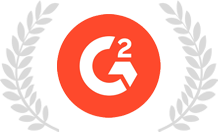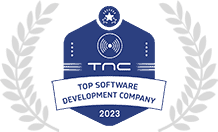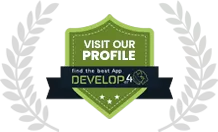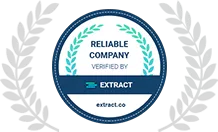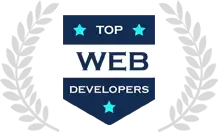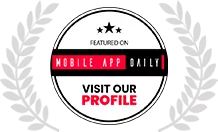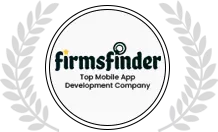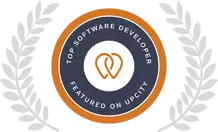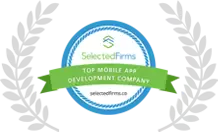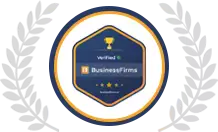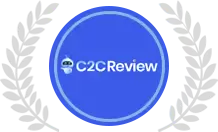Flutter is an open-source UI software development kit created by Google. It allows developers to create natively compiled applications for mobile, web, and desktop from a single codebase. The key features that make Flutter unique include:
- Fast Development: Hot reload enables developers to see changes instantly.
- Expressive UI: Provides a rich set of customizable widgets for smooth designs.
- Cross-Platform: Develop once and deploy on multiple platforms.
- Growing Ecosystem: Supported by Google and a vibrant developer community.
Why Learn Flutter?
Flutter is used by companies like Alibaba, Google Ads, and eBay for high-performance apps. As the demand for cross-platform solutions increases, Flutter expertise opens doors to lucrative job opportunities.
Also Read :- How to Build an iOS App in Flutter
Skills You Need to Be a Flutter Developer
To succeed as a Flutter developer, you need a mix of technical and soft skills. Here’s a breakdown:
Technical Skills
- Dart Programming Language
Flutter relies on Dart, a language created by Google. Learn Dart basics like variables, data types, OOP principles, and asynchronous programming. - Flutter Framework
Gain a strong understanding of widgets, state management, animations, and routing. - Version Control Systems (Git)
Collaborate effectively by mastering Git and GitHub. - APIs and Backend Integration
Work with RESTful APIs and GraphQL to connect apps to backend services. - UI/UX Design Principles
Build user-friendly and visually appealing interfaces.
Also Read :- How to Build APK in Flutter VS Code
Step-by-Step Guide to Becoming a Flutter Developer
Here’s how to start your journey as a Flutter developer:
Step 1: Learn the Basics
- Start with Dart programming.
- Practice Flutter widgets like
Container,Row,Column, andText. - Build a basic app to understand layouts and navigation.
Step 2: Build Projects
- Create apps like to-do lists, weather apps, or chat apps to solidify your skills.
- Focus on integrating Firebase or third-party APIs.
Step 3: Explore Advanced Topics
- Dive into state management tools like Provider, Riverpod, or Bloc.
- Learn to optimize app performance and implement custom animations.
Step 4: Join the Flutter Community
- Participate in forums like Stack Overflow or join Flutter Meetup groups.
- Follow Flutter’s official documentation and GitHub repo.
Tools Every Flutter Developer Must Know
Using the right tools can streamline your development process. Here’s a curated list:
| Tool Name | Purpose | Description |
|---|---|---|
| Flutter SDK | Framework setup | Provides tools to develop Flutter apps. |
| Android Studio | IDE for app development | Includes plugins for Flutter and Dart. |
| VS Code | Lightweight code editor | Offers Flutter extensions for debugging and syntax support. |
| Firebase | Backend integration | Provides authentication, database, and analytics services. |
| Figma | UI/UX prototyping | Useful for creating app design prototypes. |
Building Your First Flutter App
Step-by-Step: A Simple To-Do List App
- Set Up Environment:
- Install Flutter SDK and an IDE (VS Code or Android Studio).
- Create Project:
- Run
flutter create todo_appin your terminal.
- Run
- Write Code:
- Add widgets like
ListView,TextField, andFloatingActionButton.
- Add widgets like
- Test & Debug:
- Use hot reload to test changes instantly.
- Deploy:
- Build APK using
flutter build apkand share it.
- Build APK using
Flutter Developer Career Tips
Build a Portfolio
- Showcase apps on GitHub or a personal website.
- Highlight apps with unique features like offline support or custom animations.
Stay Updated
- Follow Flutter.dev for updates on new versions.
- Experiment with packages on pub.dev.
Networking
- Connect with recruiters on LinkedIn.
- Attend events like Flutter Engage or DevFest.
Salary Expectations and Job Opportunities
The average salary for a Flutter developer varies based on experience and location. Here’s an overview:
| Region | Entry Level | Mid-Level | Experienced |
|---|---|---|---|
| North America | $60,000/year | $85,000/year | $120,000/year |
| Europe | $40,000/year | $70,000/year | $100,000/year |
| Asia | $15,000/year | $30,000/year | $50,000/year |
Flutter expertise is in demand in industries like e-commerce, fintech, and edtech.
Common Challenges and How to Overcome Them
Understanding State Management
Solution: Start with simple tools like Provider and progress to advanced tools like Bloc.
Performance Optimization
Solution: Use Flutter’s profiling tools and avoid overloading the widget tree.
Learning Curve for Dart
Solution: Dedicate time to practicing Dart syntax and core concepts.
20 FAQs About Becoming a Flutter Developer
- What is Flutter?
Flutter is an open-source framework by Google for building natively compiled apps across platforms. - What programming language does Flutter use?
Flutter uses the Dart programming language. - Is Flutter good for beginners?
Yes, its simplicity and hot reload feature make it beginner-friendly. - How long does it take to learn Flutter?
Basic proficiency can be achieved in 3–6 months with consistent practice. - What are Flutter widgets?
Widgets are the building blocks of Flutter apps, used to create UI and functionality. - Can I build web apps with Flutter?
Yes, Flutter supports web development. - What IDEs support Flutter development?
Android Studio, VS Code, and IntelliJ IDEA. - What is hot reload?
A feature in Flutter that reflects code changes instantly without restarting the app. - What is the difference between React Native and Flutter?
Flutter uses Dart and compiles to native code, while React Native uses JavaScript and relies on a bridge for interaction. - What backend works best with Flutter?
Firebase is a popular choice for its seamless integration. - Do I need to learn native Android or iOS development for Flutter?
No, but basic knowledge of native platforms can be helpful. - Is Flutter suitable for large projects?
Yes, many large companies use Flutter for scalable projects. - How do I manage app state in Flutter?
Use state management tools like Provider, Riverpod, or Redux. - What are the best resources to learn Flutter?
Official documentation, online courses, and YouTube tutorials. - Can I integrate AI features into Flutter apps?
Yes, you can use APIs like TensorFlow Lite or Firebase ML Kit. - What are Flutter plugins?
Packages that extend Flutter’s capabilities, available on pub.dev. - How do I deploy a Flutter app?
Use commands likeflutter build apkfor Android andflutter build iosfor iOS. - What are the benefits of using Flutter?
Cross-platform support, fast development, and expressive UIs. - What is Dart’s role in Flutter?
Dart is the programming language used to write Flutter apps. - Is Flutter free to use?
Yes, Flutter is entirely free and open-source.
- How to Join Two Strings in Flutter - January 2, 2025
- How to Add Icon in Flutter - January 2, 2025
- How to do Facebook Login in Flutter - January 2, 2025


